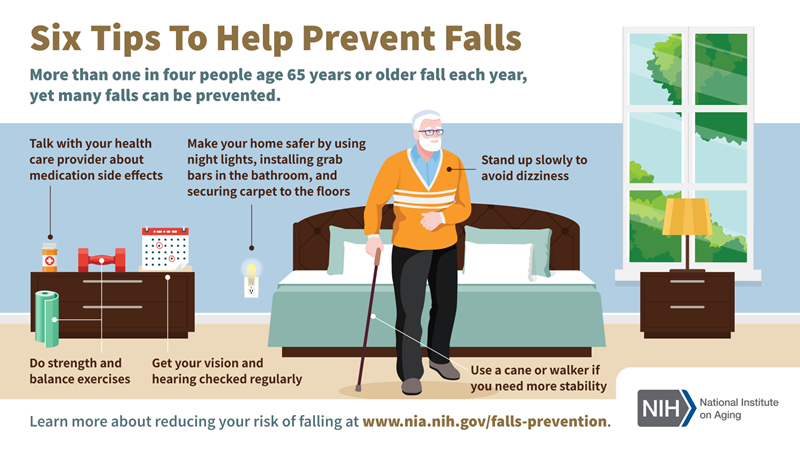Falls Prevention Awareness Week (18th – 22nd September 2023)
As part of ‘falls prevention awareness week’ we are wanting to raise awareness within the hospice and local community regarding managing falls risk as well as signposting staff, volunteers and our service users on how to access resources to support this.
Around 1 in 3 adults over the age of 65 and half of people over the age of 80 will have at least one fall a year. Most falls do not result in serious injury. However, there is always a risk that a fall could lead to broken bones. It can also lead to a person losing their confidence, becoming withdrawn and feeling as though they have lost their independence (NHS 2023).
At Lindsey Lodge the clinical team work hard to reduce a person’s risk of falls when they attend the hospice, either as in in-patient or when visiting the wellbeing centre.
Every person who is admitted to the hospice in-patient unit service, or who attend the wellbeing centre for the day, will receive an immediate falls risk assessment. This is usually completed by a registered nurse and recorded on our electronic system. If someone is identified as being at a high risk of falls, they may be referred to the occupational therapist, or advanced assistant, for a more detailed assessment of their needs. This will also include completion of a risk assessment on how the person is safest to move to reduce their risk of falls.
Our Quality and Education Lead Sally Watson and ACP Occupational Therapist Sarah Hodge, complete a regular falls audit. This helps us to monitor how many patient falls are happening within the hospice and the nature of each fall. From this, action plans are made, and any potential learning is taken forward either within wider governance meetings or in the form of educational sessions for the clinical team.
We know that we can never prevent falls completely. It is therefore important for us to raise awareness to individuals as to what they can do to reduce their risk of falling. Clinically, it is important for us to ensure we have appropriate and effective services and equipment in place to further support this.
At the hospice we have two key resources for patients and staff:
- Information and advice for the prevention of falls (leaflet)
- Moving and handling policy, including the prevention of falls (policy)
Both documents can be referred to as required.
If a person has been identified at a higher risk of falls, they will be provided with the information leaflet. This highlights reasons as to why a person may fall, how they can reduce their risk and considerations if they are staying at the hospice for any length of time.
When staying in the hospice, a few methods we use to support individuals to reduce their falls risk include:
- Moving a person’s position or room, for example, closer to the nurse’s station for support
- Use of safety rails on the bed (this is always individualised and risk assessed depending on the person’s circumstances)
- Rearranging the bedroom space to support the person’s needs
- Hourly care rounds
- Provision of grippy socks
- Provision of a walking aid
- Sensor mats
At the hospice the overall aim is to work in partnership with the person and their family to enable independence as much as possible whilst reducing the risk of falls and injury to the person.
In the home, it can be a little trickier to manage.
There are lots of pieces of information and resources to support people to reduce their risk of falls. The following link below identifies 6 ‘top tips’ to help prevent falls at home:
https://www.nia.nih.gov/health/infographics/six-tips-help-prevent-falls

At home, there are things you can do yourself or within your home environment that could reduce your risk of falls. From patient and family feedback, our 10 top tips include:
- Removing or securing loose rugs or carpet
- Have a light at the side of your bed
- Keep stairs and walkways clutter free
- Use walking aids to support your mobility if you have been provided with one
- Keep regularly used items on your kitchen within easy reach
- Participate in gentle exercise to maintain muscle strength
- Don’t rush!
- Keep on top of check-ups in relation to your eyesight and feet
- If you have a fall, seek advice from your local GP or GP practice
- Minimise bending and reaching